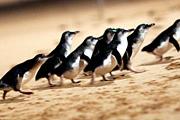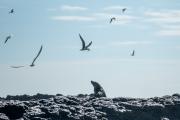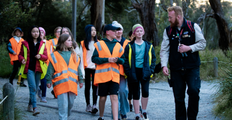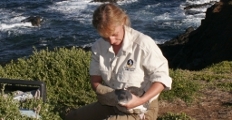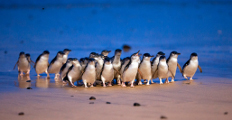New plan to future proof treasured Phillip Island penguin population
New plan to future proof treasured Phillip Island penguin population
Phillip Island’s Little Penguin population will face greater protection against the threat of bushfire and heatwaves in the biggest conservation effort to safeguard the species since the landmark Summerland Peninsula buyback of the 1980s.
Phillip Island Nature Parks has been awarded $227,000 from the State Government’s Risk and Resilience Grant Program for its ‘Future Proofing Little Penguins’ initiative, which will better protect the widely loved animals from extreme weather, dehydration and fire.
In an Australian first, Nature Parks will use evidence gathered during research to modify penguin habitat to reduce flammability and land temperatures, particularly in areas where common fire risk reductions such as controlled burns or fire breaks can’t be used because of
the impact to significant vegetation and wildlife.
As part of the project, researchers are heat mapping the Summerland Peninsula for ‘hotspots’ that need to be revegetated, and analysing that data to prioritise key penguin breeding and nesting areas.
Nature Parks will also modify and replace vegetation to expand habitats for Little Penguins and reduce the impact of climate change, heat stress and fire.
Phillip Island Nature Parks Ranger-in-Charge Ben Thomas said climate change and threat of increased penguin mortality due to more severe and frequent heat stress events and destructive bushfires had been a driving force for the holistic initiative that would ‘future
proof’ the species.
This includes creating more habitat and establishing ‘green firebreaks’ made of vegetation to help safeguard the Little Penguins at three locations in Manndeville Road, Portslade Road and Solent Avenue in the former Summerland Estate.
Nature Parks will remove sections of overabundant melaleuca scrub, which inhibit biodiversity and penguin friendly vegetation, and replace it with bird succulent herbland species, such as Bower spinach.
Work to remove identified areas of melaleuca scrub will start in March and will take up to three months to complete, before volunteers start to revegetate the sites with over 10,000 penguin friendly plants in late autumn and early spring.
“The Summerland Peninsula is home to Australia’s largest Little Penguin colony, and we have an important role to play in securing the future of the species. That means doing all we can to protect these treasured animals,” Mr Thomas said.
“The reality is climate change is making heat stress events and bushfires worse, not only in Australia but across the world. These are more frequent, more intense and more dangerous.
“The modified vegetation structure has the ability to greatly reduce the speed and intensity of a bushfire, and importantly would provide emergency services more time to respond, giving our little penguins the best chance of survival in the event of a fire.”
Mr Thomas said controlled burns and large, cleared firebreaks were not practical on the Summerland Peninsula due to the risk of harm to the Little Penguins, their burrows and the habitat, particularly during moulting season.
The vegetation project has also been supported by the Penguin Foundation and a NAB Foundation community grant, which funds local projects that build resilience against future disasters and climate change.
In the 1980s, the Victorian Government brokered the largest residential buyback in the state’s history, purchasing 774 housing and other lots in the Summerland Residential Estate to protect the state’s beloved penguin colony from extinction.
The buyback coupled with dedicated conservation measures by Nature Parks has helped penguin numbers on the island grow from 12,000 in the 1980’s to 40,000 birds today.





